AI image generators can create amazing pictures, a portrait of you is not one of them.
The whole world is abuzz with pictures from AI image generators. Often surprising and evocative, few products of artificial intelligence seem to have provoked such a huge response in the public. AI generated faces look amazingly real but are entirely synthetic. More figurative images seem to possess the same sensibility and style as those of well-known artists. Others present the format and perspective and scale of common art forms like character design and movie concept art. The cliché is, “I don’t know what art is, but I know it when I see it.” With AI generated images, people are seeing it a whole lot of images they like. But is it really art? I tried creating a self-portrait to answer the question.
AI image generators: Dall-E, Stable Diffision, and Midjourney
Dall-E was one of the first of the AI generators to catch on. Using an implementation of the GPT-3 artificial intelligence, engineers at OpenAI repurposed the AI focused on language to focus instead on images instead of text. I can’t pretend to know how it works. I do know that artificial intelligence uses what is called a model. A model consists of algorithms, and data together. Dall-E was trained on 400 million pairs of images with text captions scraped from the Internet. Immediately on the heels of Dall-E came Stable Diffusion and Midjourney. Initially Dall-E was open for a limited beta, but now all three are open and free to try.
How to use AI image generators
You prompt the AI image generator with a text description of what you want to see. For example:
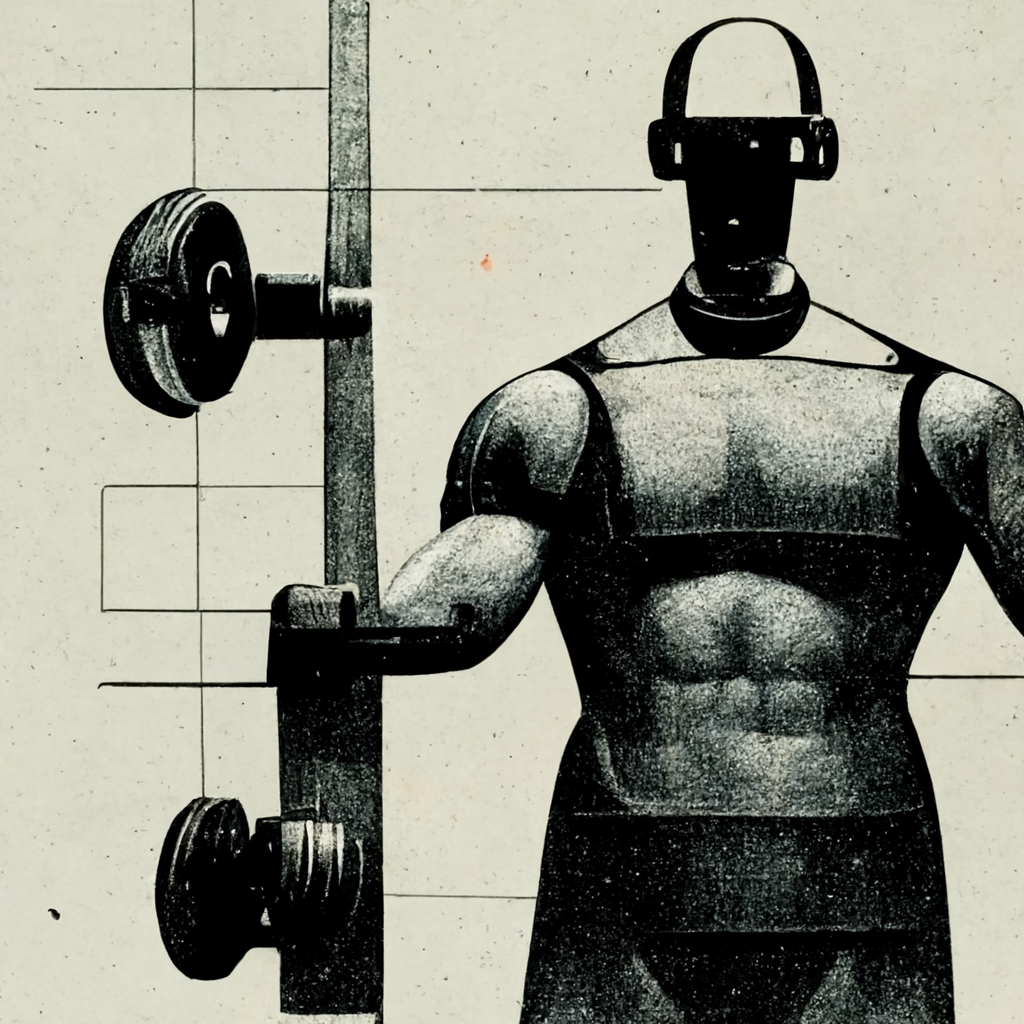
/imagine prompt man lifting weights in gym data privacy
Or
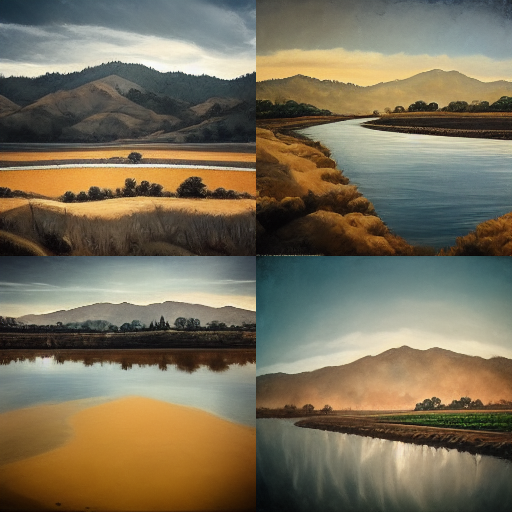
/imagine prompt San Rafael California drought, dead lawns
You can add descriptions of feelings, moods, styles or painting techniques. Or you can add styles and specific camera parameters such as:
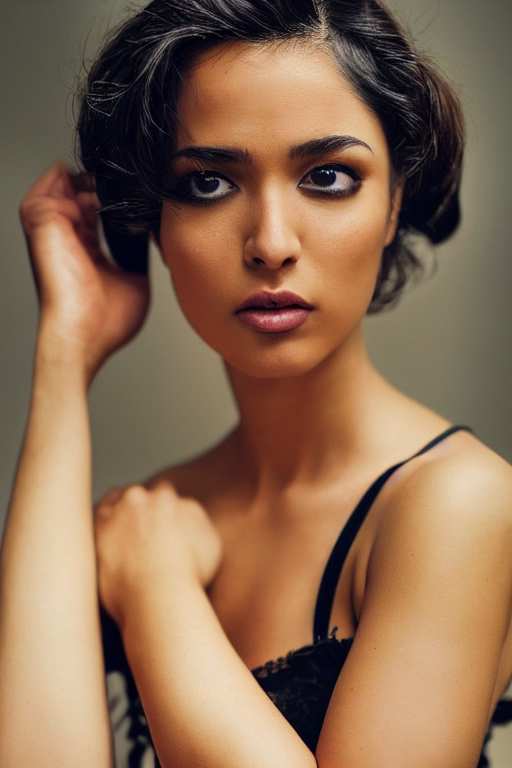
/imagine prompt hyper realistic Latino vogue star model photography, portrait of a beautiful girl, brunette short hair, hand-bra, not cross-eyed, stunning, symmetric eyes, not too large eyes +well proportioned, 8k, morphing, natural, high octane, hyper detailed, soft light, leica lense, Peter Lindbergh, long exposure shot 47°, portrait taken by a Sony Alpha α7 –ar 2:3 –upbeta –testp –seed 11235
And you can weight each of the words or phrases in your prompt or the image prompt such as:
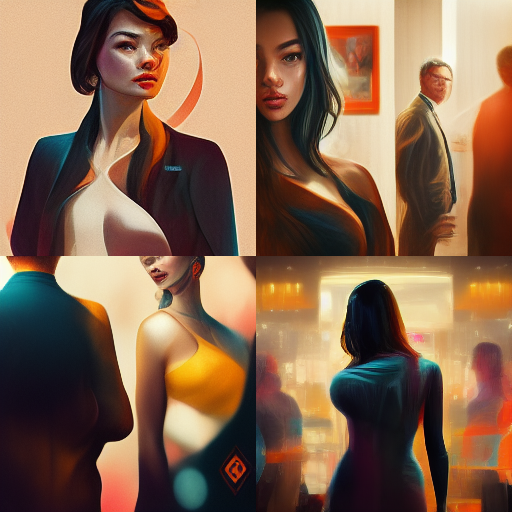
/imagine prompt real estate agent::.5 superhero::.25 empowerment::.5 confidence::1 affinity::.5 realistic detailed –iw 1
What’s going on with AI image generators?
I like these images. It is easy to go down the rabbit hole working with AI image generators. The user experience of interacting with Midjourney incorporates features of behavioral economics that keep you prompting. Just like the infinite scroll of Facebook, you never know what you are going to get and you can keep scrolling backwards in time to see the evolution. As a self-styled artist, I find working with AI image generators as a deliciously frustrating process. Never able to get close to the thing I am looking for. After bouncing around Midjourney for several days, I started experimenting with a specific goal in mind. To create a self-portrait that evoked something of myself that I wanted to express.
The lost art of self-portraiture with AI image generators
Self-portraits are the quintessential art subject. Self-portraiture started in the 15th century. Rembrandt was known for his self-portraits. The motivations for artists to do self-portraits seems obvious. It’s cheap to do a self-portrait. You don’t have to schedule or pay for the time of a model. With mirrors and photography, self-portraiture became easier. There’s undoubtably a narcissistic impulse, the same one that drives people to Google themselves. Who are we to judge. Artists want to understand how they look to the outside world. My own photographic self-portraits feel like an attempt to reconcile my model of myself and how I look with what is seen by others.
The uses of self-portraits are also straightforward. If you want to advertise your portrait business, they can serve as a sample. With unlimited bites at the apple, an artist can practice depicting a single subject repeatedly to refine their technique and develop a better product. There is also the question of privacy. With self-portraits the artist and subject are one. No need for anyone else to witness the process, or risk offending with the results.
Making a self-portrait with Midjourney
My goal was to create an idealized oil painting of myself that I could use on social media. Although I am an artist of sorts, I am not a portraitist. I also wanted to understand how AI-image generators worked. Are they like the caricature artists at the fair, who emphasize your distinctive features? Caricatures exaggerate features grotesquely but still maintain a composition that leaves you identifiable as the subject.
I started off simple. I prompted with a business head shot and the word professional.
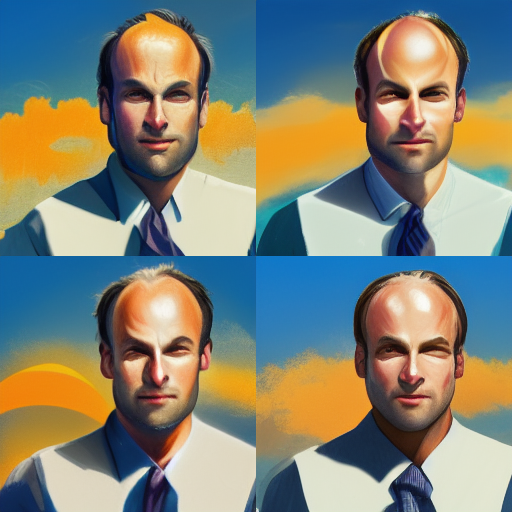
/imagine prompt professional
I had seen the process of other users on Midjourney and they were able to get very accurate likenesses of famous people. I wondered whether the AI had a bunch of headshots or portraits of these people in the model. Perhaps they had a very large set of headshots of people.
So I tried the same prompts with my name as the text prompt.
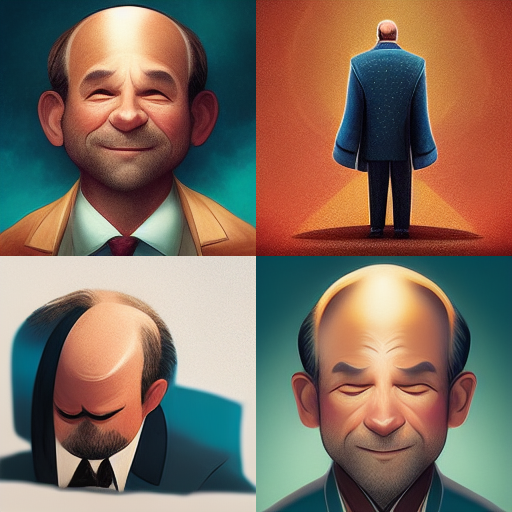
/imagine prompt a middleaged balding fit marketing officer dreams up an amazing advertising idea disney
Taking a different tack, I tried again with just the image prompt.
/Imagine prompt (image) (image) portrait of a friendly attractive intelligent likeable man by Aaron Douglas and Alex Ross and Andrew Wyeth –iw 2 –seed 112358


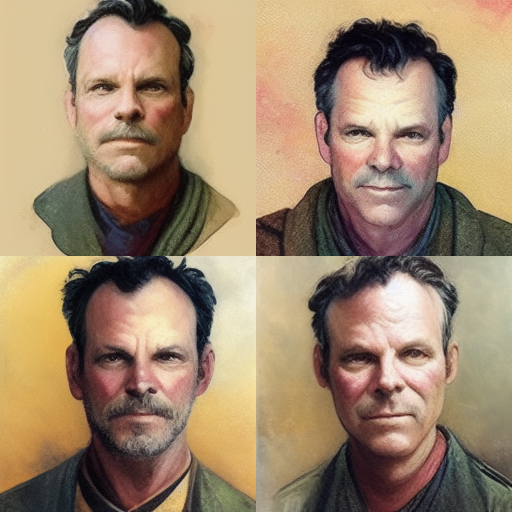
All of these look more like other people I know than they do me.
Using Celebrities as Approximates
Next I explored my theory that other Midjourney users were getting good likenesses of particular people because the model included many image samples of their likeness. Not being famous, I came up with another methodology. Using AI-lookalike apps online, I discovered which famous people I looked like.
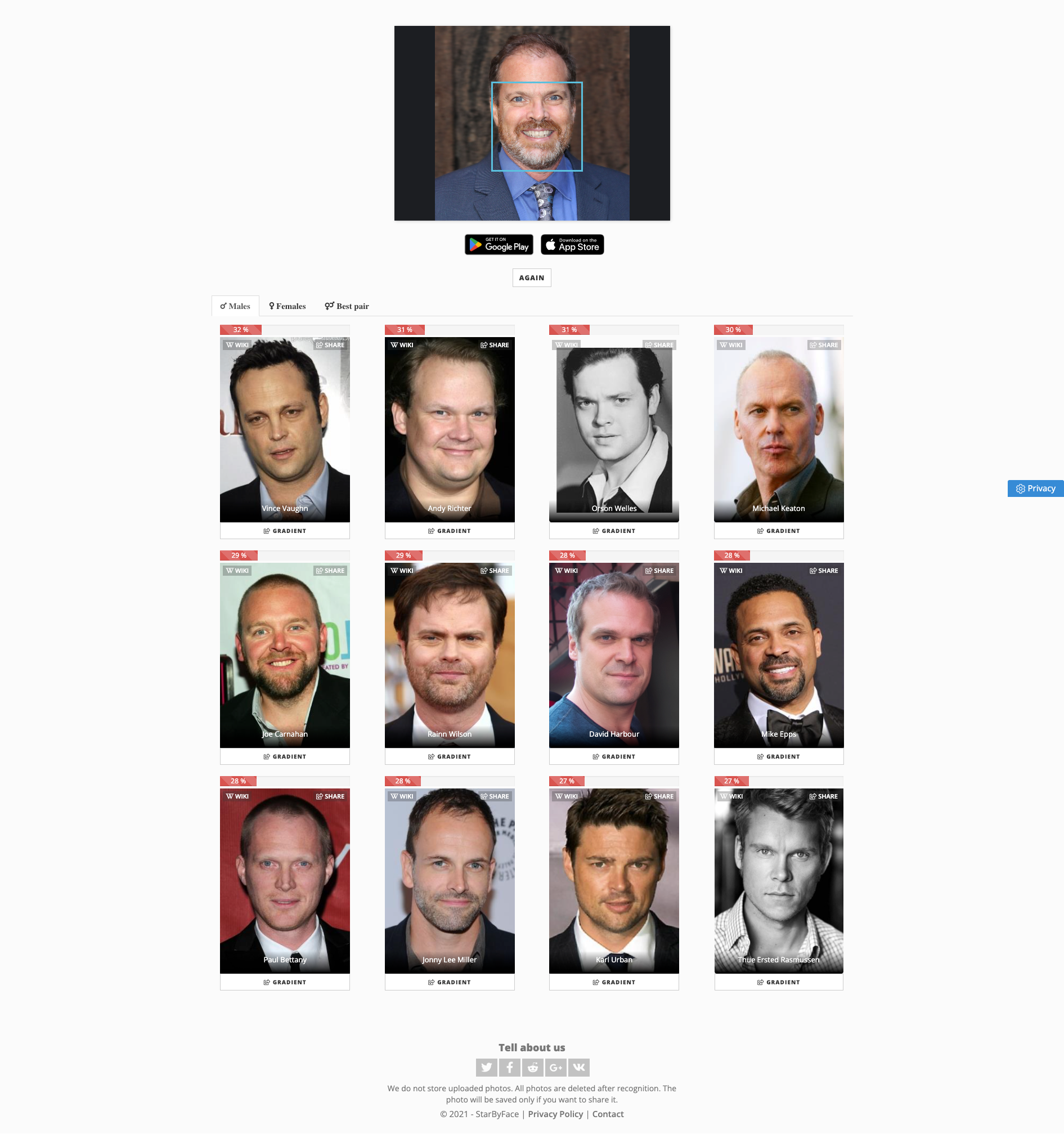
I picked the people with the greatest similarity to me according to the AI and used their names as image prompts. This Gradient tool is supposed to show how much I look like Michael Keaton. I ran that through MidJourney…

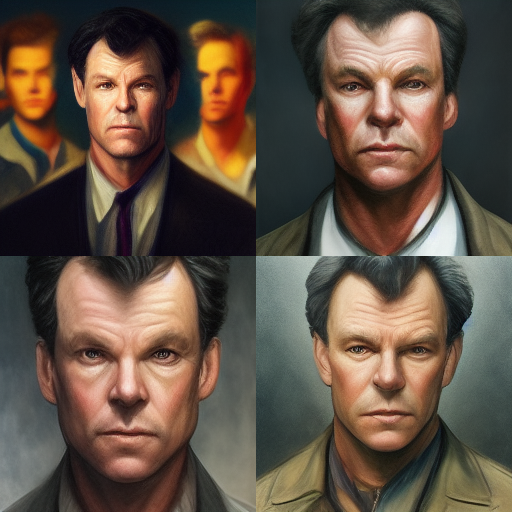
/Imagine prompt Side view portrait of a blend of Anthony Michael Hall, Pierce Brosnan, Michael Keaton, Karl Urban, Adam Baldwin, Michael C. Hall, Jack Nicholson, Patrick Swayze, Peter Saarsgard, Benedict Cumberbatch, photorealistic
I was expecting to get an idealized version of my face such as that made from a composite of hundreds of people. I was expecting that all the the distinctive features each of these faces had in common would get reinforced, and all the features where they diverged would get diminished. The particular constellation of features they would have in common with me, and that the final image would end up looking more like me than any of them. Not so much.
The weird treatment of eyes which made it difficult to objectively evaluate the images, but that really doesn’t look like me.
Fixing the eyes
I took a draft I had done, upscaled it, and then ran it through arc tencent face restorer to fix the eyes https://arc.tencent.com/en/ai-demos/faceRestoration.
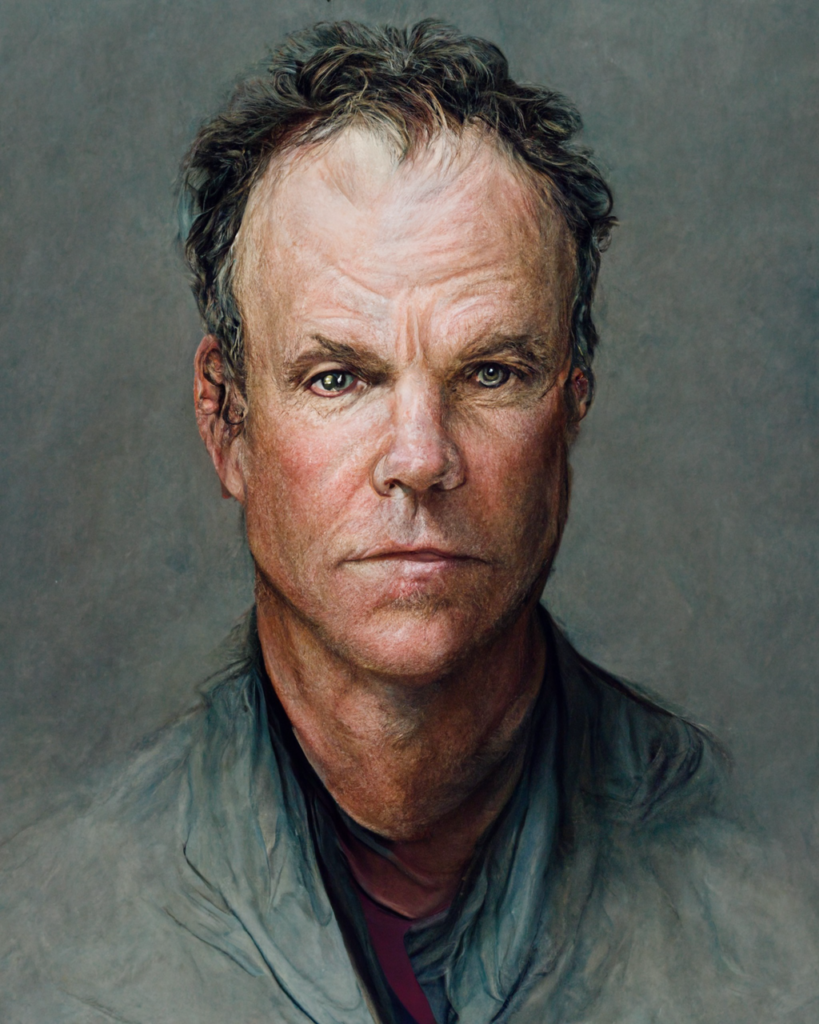
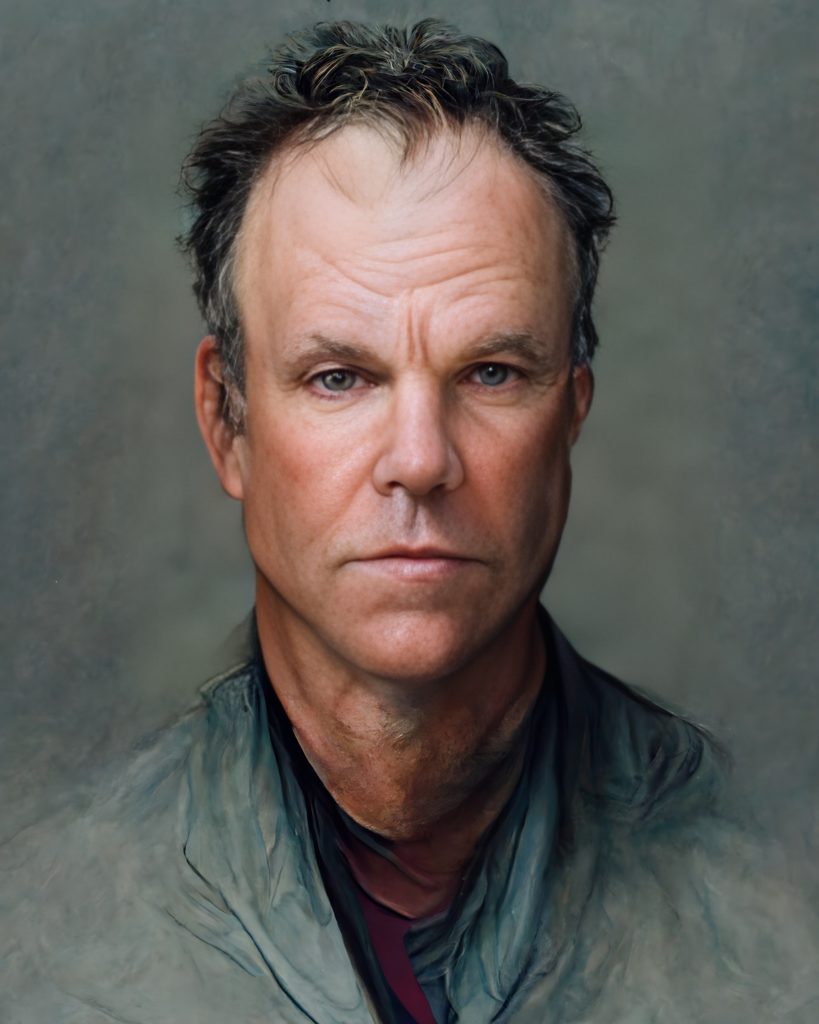
Better, but still not a likeness.
I next tried using some of the prompts that I had seen other people use to get more detailed images. As well as trying a more upscaled initial draft.
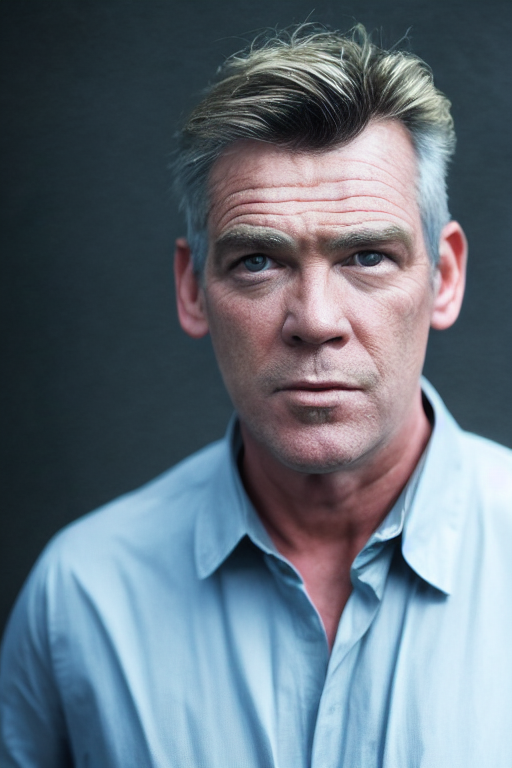
/imagine prompt Portrait of a combination of Anthony Michael Hall, Pierce Brosnan, Michael Keaton, Karl Urban, Adam Baldwin, Michael C. Hall, Patrick Swayze, Peter Saarsgard, 55-years-old, balding, freckles, chubby cheeks, small nose, photography, full body, intricate details, highly detailed, insanely detailed, 8K, hd, cinematic lighting, realistic, photo realism, under the sun, sharp focus, unreal engine
Handsome fella. Doesn’t look like me at all. Handsome fella, but doesn’t look like me. (Looks kind of like the love child of David Lynch and Pierce Brosnan)
I tried again, dropping the Pierce Brosnan and adding a little David Hasselhoff. I also borrowed some parameters from another user and got this:
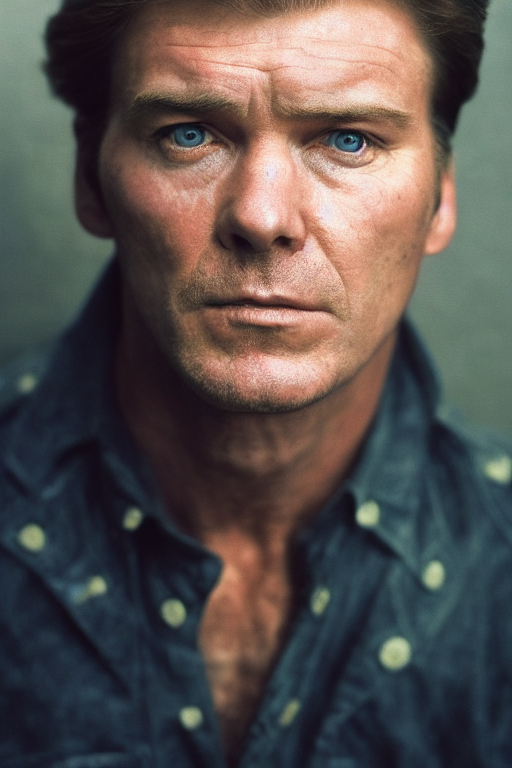
/imagine prompt portrait of a combination of David Hasselhof, Anthony Michael Hall, Michael Keaton, Karl Urban, Adam Baldwin, Michael C. Hall, Patrick Swayze, Peter Saarsgard, 55-years-old, balding, freckles, chubby cheeks, small nose, photography, full body, intricate details, highly detailed, insanely detailed, 8K, hd, cinematic lighting, realistic, photo realism, under the sun, sharp focus, unreal engine, –s 1250 –ar 2:3 –testp –upbeta –upbeta –upbeta
Once again handsome fella, but not me.
I Give Up, For Now
I tried combining this image with an image of myself. The Midjourney doesn’t allow you to use the upscale beta which yields excellent results on images of people with an image prompt, so using the standard upscaling algorithm, I got the weird images I got before which don’t look anything like me.
So, I am stumped in creating AI-generated self-portraits. I wish I knew better how the image generation worked. You can see all of my efforts at my public profile here. I also tried this in stable diffusion and Dall-E with similar results.
Are AI Images Art?
This exercise in trying to generate a self-portrait highlights the limitation of AI image generation. Clearly the models used for image generation are not optimized for portraiture. In no sense are these artificial intelligences intelligent. They don’t understand the meaning of a Rembrandt or Boris Vallejo or any other artist.
AI generated images are anti-art
The process of using AI image generators is the opposite of what you do as an artist.
As an artist you concretely manifest the indescribable things that you feel and think in an artwork.
AI-generated art, you prompt the AI by describing the thing you imagine, the AI tries to make the thing algorithmically from the historical manifestations made by other people and classified with meaning by crowds of people.
In essence, it is anti-art.
What is the role of the artist?
Is it to communicate meaning to the viewer? Is it to make the viewer feel something? Or is it to express an idea of what it is to be human. Is it to share with viewers a unique perception of an idea. Through that communication of meaning and perception, forging a kinship with the humanity with the viewer.
In a way it is like the argument of which is better the book or the movie. I’m in the camp of people who feel that seldom is a movie better than the book. Books are like prompt to AI image generators. The reader imagines the scene in a book, assembling the visuals in an unmapped process from a model built from experience of their senses.
Art As Provocation
On the other hand, art can be recognized by its provocation. All the debate around I image generation, its impact on the livelihood of artists, technicians and creators, and the indelible bias baked into even the most expansively trained AI models is testament to the ability of AI image generation to evoke an emotional response.